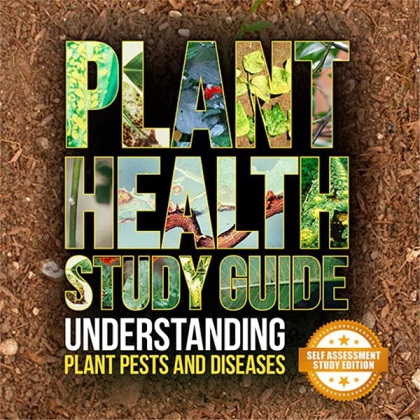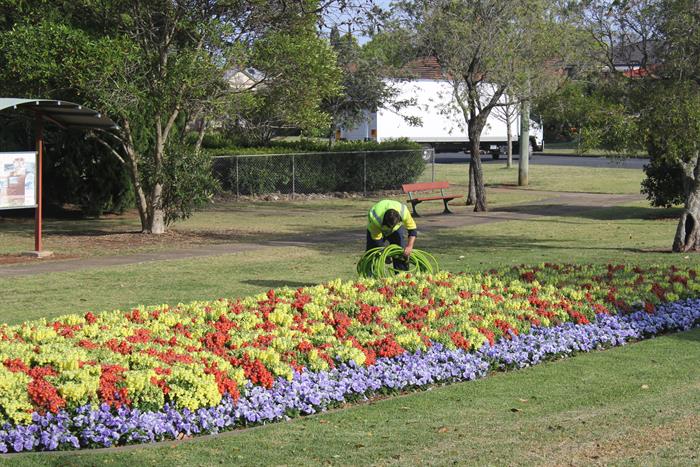
Sneak Peek
It always seems that the more work you do in a garden, the more pest and
disease problems seem to appear. For this reason, the keen home
gardener and the professional landscaper need to be aware about what
pests and diseases they may come in contact with, and how to control
them.
This Study Guide will help in the identification of these problems.
Without correct identification, it would be very difficult to suggest a
suitable method of control. For example, a hole in a leaf may indicate
damage by a pathogen such as a fungus, bacterium, or virus, or it could
be caused by an insect. If you thought the problem was caused by an
insect and sprayed it with an insecticide, but it was actually caused by
a virus, then the spray is totally wasted.
The course will help the home gardener and those working in
horticulture at an entry level to identify and control a range of the
most common pests and diseases of plants.
Course Lessons
This course covers six lessons.

Lesson 1: Identifying problems
- Understanding what can go wrong with your plants
- More than one problem
- Finding out what the problem is
- Conducting an inspection
- Alternative approach
- Still unsure?
- Telltale symptoms
- The main types of problems
- Pests
- Diseases
- Shortcuts to problem identification
- What insect is it?
- Diagnosis of plant disorders
- Difficult to diagnose problems
Lesson 2: Treating problems
- Different ways to control pests and diseases
- 1) Cultural control
- 2) Biological control
- 3) Physical controls
- 4) Chemical
- 5) Legal control
Lesson 3: Problems and the plants they affect
- Flowers & bulbs
- Fruit & vegetables
- Indoor, shade & greenhouse plants
- Shrubs & climbers
- Trees
- Lawns
- Australian natives
Lesson 4: Pests
- The major types of pests
- Common garden pests
- Millipedes
- Wasps
Lesson 5: Diseases
- Disease considerations
- Types of pathogens
- Symptoms
- Understanding diseases
- Stages in the development of a disease
- Common diseases
Lesson 6: Environmental problems
- Common environmental problems
- Foliage burn
- Pollution
- Lack of water
- Drainage problems
- Frost
- Hail
- Shade
- Temperature
- Wind
- Plant tolerance levels
- Ways to protect plants
- Protective structures
- Staking
- Tree guards
- Wind breaks
- Mulching
- Environmental problems in lawns
- Appendices
- Spray programmes
- Stages of growth
- Simple conversions
- Further information
- Publications/bibliography
- Diagnosis services
- Glossary
Identifying Plant Diseases and the Correct Treatment
Quick methods for assessing plant problems tend to be less technical and include things like: matching the problem to a photograph or description (in a book or on a chart), checking problems common on that plant, and identifying broad groups rather than specific diseases.
Before applying the best treatment, one needs to know what is causing the problem/s. It requires a great deal of knowledge and expertise to be able to precisely diagnose plant troubles. Do not expect to develop such ability quickly. The first and perhaps most important skill to develop is how to inspect a plant in order to discover the telltale symptoms which will provide an indication of what is wrong. This process requires practice and careful observation. You will learn the techniques and what is used to treat a variety of diseases.
How do our courses work?
- This is a self-guided course- you work through the course at your own time.
- Enrol any time. Your enrolment will be processed during business hours within a few hours.
- After your enrolment has been processed, you will receive an email
explaining the course and how to access to the study guide, and our help
desk. The guide contains both an audio and written explanation of how
the course can be studied.
- Follow the study guide, read and undertake different learning tasks to
broaden and deepen your understanding of the subject. These tasks can
vary from practicals to research and more. You can select to do as many
or as little as you like.
- If and when you need to; you can contact our academic staff via a help desk. Emails are answered during business hours.
- At the end of each lesson, you are presented with a series of automated
self assessment questions, to review and reinforce your learning
experience.
- Once you have completed all of the lessons, you are presented with a
major online exam comprising lots of questions. The exam is assessed in
our online training system once it has been submitted. If you achieve a
result of 60% or more, you are given access to download a “Certificate
of Completion” with your name, together with the current date and name
of this short course.
- Everything is automatic, but if you do need help at any point along your
journey of discovery there is a help desk, with real people who have
real expertise –only an email away to help you out.